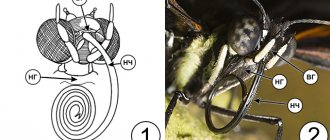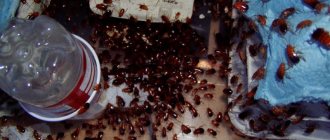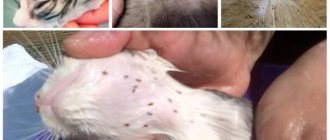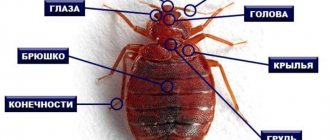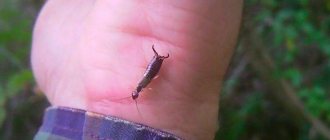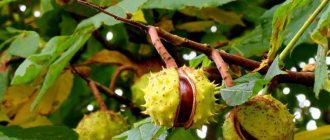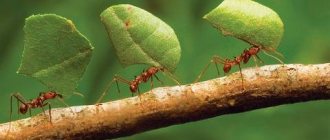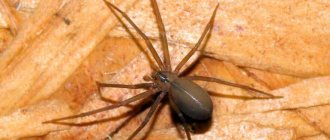Earwigs or double-tailed birds evoke feelings of disgust, disgust and even fear. The insect has an unpleasant appearance - a long body, two sharp swords at the end, protruding mustaches, creating the appearance of a monster, when you look at it you want to immediately leave the room.
But do not be afraid, this creature is not as dangerous as it seems.
The earwig order is a widespread family, representatives of which can be found everywhere - at home, in gardens, vegetable gardens, outbuildings and many other places.
To understand who they are, it is worth carefully considering the appearance, species, habitats, reproductive characteristics and other qualities of insects.
Why is the earwig called that?
There is a legend among people that an earwig can crawl into a sleeping person's ear and pierce the membrane. As a result of this, it penetrates the brain, begins to slowly feed, and this leads to death.
By feeding on the brain, the insect grows. All this, of course, is not true. But the legend is so rooted that even a group of creatures received a name - earwigs.
The legend contradicts the truth and it is not clear why the insect is called an earwig. It does not get into people's ears and does not cause harm. If you pick it up, you might pinch it in self-defense. The bite can only be dangerous for allergy sufferers.
At the rear end of the body, the creatures have characteristic processes that resemble forceps. This gave rise to the second name of the insect - the two-tailed or two-tailed cockroach.
It uses these limbs as weapons for self-defense. When danger approaches, the double-tailed snake puts its shoots in the direction of the threat and can strongly pinch with them.
External structure of earwigs
Earwigs belong to the phylum of arthropods, they are representatives of the order of cryptomaxillary. Insects have a small body, the length of which is 2-5 mm. But in nature there are giants with body sizes of 50-60 mm.
They love to inhabit places with high humidity.
To understand the type of insects, it is worth considering the structural features of earwigs:
- they have an oblong body with a flat shape;
- the surface of the body is brown-chestnut in color;
- males are large, their body length can reach 2-4 cm, but females are smaller - the size does not exceed 1.5 cm;
- the outside of the body is covered with a shell with a strong and dense structure;
- Adults develop membranous wings, and some species may have two pairs. But they still prefer to move on the ground;
- on the surface of the head they have small eyes and antennae with a thread-like structure. The latter consist of 11-14 segments;
- the limbs are short and consist of three segments. The insect has three pairs of legs. There are claws at the ends;
- at the end of the body, on the abdominal area, there are claw-shaped processes, which are also often called “pincers”. They are designed to protect and hold prey.
Particular attention should be paid to the type of structure of the oral apparatus of earwigs; they have a gnawing one.
Its design allows you to easily handle food. The mouthparts of the two-tailed fish are directed forward.
Features of the structure of earwig wings
Particular attention should be paid to the wings. They have a specific structure, so many people believe that insects cannot fly, but this is not true.
The wings of earwigs have the following features:
- the front wings are small and fit tightly to the surface of the body;
- have a sclerosed structure, they lack venation;
- the hind wings are hidden under the front wings and have a membranous structure;
- veins are located on their surface in a radial position.
This wing structure keeps the earwig upright in flight. Since the process of unfolding and folding elements is a complex matter, double-tailed birds rarely fly.
When landing, they have to fold their membranous wings twice. For this reason, they prefer to travel by land.
But as for the important question of how many wings earwigs have, the answer can definitely be 4. The fact is that many do not notice the lower pair, because it is hidden under the upper one.
Origin of the species and description
Photo: Earwig
The earwig survives in a wide range of environments and is a fairly common house insect. Today, the name earwig (in English earwig) is interpreted as referring to the appearance of the hind wings, which have features unique and characteristic of these insects and resemble a human ear in an expanded form. The species name is a specific reference to this feature.
The earliest fossils of earwigs date back to the end of the Triassic period. A total of 70 specimens were found. Some anatomical features of modern earwigs are not found in the earliest fossils. Their claws did not bend completely, like those of modern representatives. Ancient insects looked like modern cockroaches. Their trace was lost in the sediments of the Permian period. Representatives of this group are not found in the Triassic period, when the evolutionary transition from Protelytroptera to earwigs may have occurred.
Video: Earwig
Archidermaptera is thought to be sister to the remaining groups of earwigs, the extinct group Eodermaptera and the living suborder Neodermaptera. The extinct suborders have tarsi with five segments (as opposed to the three found in Neodermaptera), as well as unsegmented cerci. No fossils of Hemimeridae and Arixeniidae are known. Like most other epizootic species there are no fossils, but they are probably no older than the late Tertiary.
Some evidence of early evolutionary history is the structure of the antennal heart, a separate circulatory organ consisting of two ampoules or vesicles that are attached to the frontal cuticle at the bases of the antennae. These features have not been found in other insects. They pump blood through elastic connective tissue rather than muscles.
Internal structure
The exact internal structure of the two-vostok has not been established. Insects have a highly developed nervous system; they have many nerve endings throughout the body - on the limbs, posterior cerci, antennae.
Therefore, they are able to sense the approach of danger from a great distance, the same applies when catching prey.
The respiratory organs of earwigs are the trachea. Air enters them through holes located on the sides of the body - spiracles. The inside of the trachea is lined with a thin chitinous film, which has a spiral thickening.
It gives the trachea elasticity and prevents them from flattening. The intake and removal of air is carried out by changing the volume of the abdomen through muscle contraction.
Double-tailed insects
Many people think that earwigs and double-tailed insects are the same insects, but this is not true at all. Although they have a similar appearance, they are considered different creatures.
To understand what distinguishes the inhabitants, it is worth considering the description of each species:
- A photo taken from the Internet will help you understand what a double-tail looks like, but it still won’t be able to tell the difference. Insects belong to the class arthropods. They have a characteristic formation at the end of the body, which looks like claws or tentacles. The insects are small; on average, the body length of adult individuals reaches 5 mm, but sometimes giants with a length of up to 5 cm are found. There is no pigmentation on the segmented abdomen. Insects do not have eyes; their role is played by long antennae with high sensitivity.
- Earwigs are members of the class Leatheroptera. Their body is elongated with a flat shape, its color is brown. The body length of males is on average 1.7-2 cm, and females - up to 1.4 cm. In nature, large individuals with a length of 6-7 cm are found. They have small eyes, wings with a membranous structure and thread-like antennae. They don't fly that often. A distinctive feature of these creatures is the shape of the cerci - the processes have a claw-like appearance and are located at the end of the body.
Video
Double-tailed
Description of the insect
The insects represent the order Leatheroptera. The body is characterized by a brown color, oblong, and measures between 2-3 cm. The earwig's abdomen is flexible, covered with plates, which makes it mobile. Thanks to the presence of processes at the end of the body, the insect is able to firmly hold prey. These structural features allow the earwig to feed: the abdomen with prey sandwiched by the cerci rises, curving, to the oral apparatus.
The wings of some species are underdeveloped, but most insects can fly. The size of the wings is less than the length of the body. Common earwigs take the opportunity to fly infrequently. The pest's mouthparts are of the chewing type. This feature allows them to eat any food. For this reason, such insects are found on various objects: shops, private housing, gardens, vegetable gardens.
Types of earwig
There is a huge variety of pests that represent the order Leatheroptera.
Insects can fly, but they do so extremely rarely.
There are about 1350 species. However, only a few types of earwigs are more common than others:
In Russia, only the common earwig can be found. Occasionally, a representative of the coastal species is found on the Black Sea coast.
The shade of insects varies from brownish to black, which is determined by their belonging to different species. The body structure of most earwigs is similar. Another difference is that representatives of the common and coastal species crawl out of their shelters at night, while the Asian and small earwigs appear during the day.
Reproduction and lifestyle
Pests feed variedly. Their favorite food: fruits, garden flowers, vegetables, various plants. However, pests can damage clothing. Earwigs eat insects, foods that are found in human homes. Pests destroy crops, damaging seeds and shoots of plantings.
Having laid eggs (one clutch contains from 40 to 100 eggs), the female is constantly close to the future offspring
Among fruits, insects prefer peaches and love grapes. However, the pests themselves do not bite into the fruits; they penetrate only where other insects have already made holes (wasps, caterpillars). These pests also feast on pollen and even bees. They spoil the hives, as they often open the honeycombs.
This is a small insect, about 2-3 centimeters long, brown in color.
An earwig is an insect that breeds during certain months in the spring or fall. The female hides the oviposition in a previously prepared hole in the ground. The depth can be different: from 5 to 15 cm. During one breeding cycle, 40-100 eggs appear.
They are characterized by their small size and white color. Until the offspring appear, the female remains nearby and protects from danger. The development of the young generation of earwigs passes the pupal stage.
These pests hide under bark and leaves during the day, gathering in groups. Insects overwinter in the ground, sometimes the depth of the burrow reaches 2 m.
Types of earwigs
The modern fauna includes about 1,300 species of earwigs, this number exists all over the world, which means that these representatives can be found in every corner of the earth.
The most favorable climate for them is a tropical forest with rich vegetation, warm air with a combination of pleasant moisture. These places are considered the best for their habitat and active reproduction.
On the territory of the countries of the former USSR there are not many varieties of representatives of leatheroptera. There are about 26 species. But we will look at the main ones.
Common earwig
Representatives of the order of earwigs of this species are considered the most common; they can often be found in our country. They are small in size, body length can reach 15-20 mm.
The color of the body is dark brown, there may be reddish shades.
Insects have well-developed muscles that ensure normal movement of the rear mites or cerci.
They know how to use them perfectly, and with their help they can calmly capture and hold prey. And in case of danger, pincers can be used as a spear for protection.
During the daytime, they prefer to hide under stones, in old stumps, or under a layer of wood ash. They can be found in places with high dampness. Common earwigs are active at night and go out in search of food.
The diet of these creatures depends on their habitat:
- Vegetation leaves of trees, young shoots, flowers, cereals, garden crops;
- Fungi that develop under the bark of trees;
- A variety of small insects.
Coastal
This variety is widespread throughout the world. Representatives can live in desert areas, as well as in forest areas.
They are found on the banks of rivers, lakes, and seas, but only if there is a certain type of soil - sandy or sandy loam.
The body structure of insects is no different from common earwigs. They have a small body, its length can be 10-20 mm.
Their coloring is slightly different - dark brown, the lower part of the abdomen, sides, cerci, and limbs are light brown, closer to yellow. The ends of the churches are dark.
Small
Individuals are widespread and can be found almost everywhere. This is the smallest representative of our fauna.
The length of the insect's body can range from 4 to 6.5 mm. That is why it received the name – small.
A distinctive feature is that they are active during the day.
Asian
In Asian animals, the surface of the body is black; there are yellow spots on the area of the elytra and wing plates. The length of the wing plates is 10-16 mm. The pincers are strongly curved. Prefers to lead a daytime lifestyle.
The variety is widespread in Central and Central Asia. It prefers to live in semi-deserts, and in southern areas it can be found in the mountains. Insects feed on plant foods.
They fly from one place to another. Their flight speed is low, but earwigs are able to rise up to 100 meters.
Guinea cave
Insects live in caves where there is no sunlight.
Due to the fact that Guinea cave earwigs are constantly in complete darkness, their appearance has changed:
- their eyes are poorly developed, they practically do not see;
- pale pigmentation is present on the surface of the outer integument;
- long limbs and antennae.
Hemimers
A common species of earwig in tropical Africa. It is classified as a parasite because the insect is found on the surface of the skin of the hamster rat.
The main features of the body structure include:
- the insect has a flat body;
- he has no wings;
- limbs are short;
- They have no organs of vision.
Ridding the house of pests
In private houses, earwigs are found much more often than in apartments. After all, it’s easy for pests to enter a house from the garden. In addition, private buildings have more damp rooms.
Before you start fighting earwigs in a private home, you need to get rid of existing debris and dry damp rooms, checking all drainpipes for leaks. You should not ignore indoor plants growing in the house, because insects often live in their excessively moist soil. To get rid of earwigs in an apartment or house, it is necessary to limit the paths of their entry by sealing all cracks and crevices, as well as using mosquito nets on the windows. You can find an effective remedy for earwigs at the sanitary and epidemiological station. Usually, ready-made poison is used or in the form of baits based on yolk and bran. Boric acid will also help get rid of pests in the house quickly.
It can be scattered on the floor or formed into balls by mixing with egg yolk. The use of this method requires limiting the access of insects to water. Otherwise, it will not be possible to achieve a positive result. You can also poison the nippers using the famous Mashenka chalk. They rub it on all baseboards in a house or apartment, and also apply the product in places where insects appear.
Life cycle
The type of development of the earwig is called incomplete metamorphosis. In a year it is able to live through all stages of development - egg, larva, adult. The female is capable of laying 30-50 eggs at a time. The incubation period is 56-80 days.
At the end of this period, larvae appear, and only then individual earwigs gradually form.
Life expectancy is 1 year; during this period, the female is capable of producing several clutches of eggs.
How do earwigs reproduce?
When considering the characteristic features of the earwig, it is worth paying attention to the reproduction process. Mating lasts 2-3 hours. Then, after two months, the fertilized female makes a tunnel 8 cm long, which ends with an extension.
In this place she breeds and lays eggs. It can lay from 30 to 60 eggs at a time.
At the beginning of March, the earwig lays eggs again, their number is no more than 20 pieces. The first larvae appear at the end of spring, but they reach full maturity only towards the end of the summer season.
When the female lays eggs, she stays close to them, protecting future offspring from danger and uninvited guests. The insect remains until the larvae appear.
Larvae differ from adults in body size, and they also do not have wings. Formation occurs gradually, the individual molts from time to time and slowly turns into a sexually mature insect.
Earwig: reproduction
The two-tailed bird lays its eggs in the soil and does not monitor their further fate in any way, while the earwig carefully controls reproduction at all stages.
- Earwigs lay eggs in the fall and spring in pre-dug underground burrows in the topsoil.
- Small earwigs hatch from eggs laid at different times of the year at the same time.
- One female lays an average of 40 to 80 eggs per year.
- Throughout the entire period of egg maturation, the earwig takes care of the clutch.
- The eggs are oval, yellow-whitish in color, and almost double in size during the incubation period.
- The larva is a copy of the adult, but smaller in size and gray-transparent in color.
- Over the summer, the larvae turn into adults, ready to reproduce, and literally harden due to the appearance of durable chitinous covers.
Habitat of earwigs
The earwig prefers to choose places with high humidity and favorable living conditions. The habitat of fauna representatives should be dark, damp and warm, where the insect will feel comfortable.
The following places are considered the best options:
- rural lands;
- gardens;
- vegetable gardens;
- damp, dark basements;
- Houses;
- apartments with poor ventilation.
The favorite habitats of insects are secluded and inaccessible areas in nature, vegetable gardens, orchards - stones, fallen leaves, piles of manure, cracks in trees, various depressions, fallen trees, firewood.
Diet of earwigs
Insect nutrition includes a variety of components. Earwigs are voracious insects that can feed on both vegetation and insects.
Let's look at what two-tailed or earwigs eat in nature:
- they will happily eat honey, fruits, and vegetables. This is a treat for them.
- Insects are pests in the garden. They are capable of causing serious damage to vegetation - they eat the edges of tree leaves, gnaw through the stems of seedlings, and damage the roots.
- Do not refuse mushrooms, seeds, moss.
- They will not disdain the leftover food that is left on the table.
- Earwigs love flowers - chrysanthemums, dahlias, asters, roses, phlox, poppies.
But there is still some benefit from pests; creatures are able to eat harmful insects that cause damage to plants in the garden.
Their favorite treats are:
- caterpillars;
- flies;
- spider mites;
- aphid.
Two-tailed insects also destroy fallen fruits and eat parasitic fungi.
Therefore, if single individuals are observed on the site, then they do not need to be destroyed, but if you notice a large accumulation of pests, then it is better to take urgent measures to combat them.
Why is an earwig dangerous?
The earwig is omnivorous. It gnaws out all parts of plants: leaves, flowers, berries, fruits, roots, unripe seeds and young shoots . First it leaves holes, then it completely destroys the leaves and damages the stems.
The pest is dangerous both in open ground and in greenhouses. The insect damages cereal plants, corn, cabbage, cucumbers, melons, pumpkin, legumes, beets, celery, tomatoes, and potatoes.
On fruit trees, the earwig looks for fruits that are overripe, weak, or already damaged by other insects and birds. Willingly eats peaches, apples, pears, cherries, plums, and cherries.
It deprives many flower crops of their decorative value: chrysanthemums, roses, carnations, dahlias, asters, phlox, poppies.
The pest can settle in beehives, houses and non-residential buildings . He opens honeycombs and loves to feast on honey . It is found in clothes and underwear, makes its way to food, and can crawl into bread and the refrigerator.
In addition to plant foods, it eats animal foods. Prefers other insect pests with soft covers. It is impossible to determine how much such benefit outweighs the harmful activity.
Earwigs in nature
The role of earwigs in nature matters. Insects are considered to be a kind of orderlies, because they eat the remains of dead plants, insects, and also destroy some types of pests.
It is important to remember that in nature everything is interconnected, therefore any insects, animals, creatures can have harmful and beneficial effects. Much depends on living conditions and time of year.
Pincers also have benefits: if they live in gardens and vegetable gardens in moderate quantities, then at night insects will be able to eliminate aphids and other pests from plants.
They also eat pathogenic fungi, which can cause serious damage to fruit and berry plantations, vegetables and other vegetation.
Earwigs have natural enemies:
- birds;
- lizards;
- spiders;
- frogs;
- other insectivorous creatures.
Danger of insects
Many people are interested in why the earwig is dangerous for people, but it is practically incapable of causing harm to human health. The insect may sometimes bite, and people with allergic reactions may be more sensitive to its bite.
The stinger is not a poisonous creature, and the liquid that it injects at the time of the bite is not poison, it is a specific aromatic substance.
If it was not possible to avoid a bite from this insect, then the affected area can be treated with an antiseptic agent. You can also take an additional antihistamine.
The danger of earwigs can only be to crops. If a large number of these insects live in a vegetable garden or garden, then they can significantly damage trees, seedlings, flowers, fruits, vegetables and other vegetation.
Prevention of occurrence
The two-tailed dog can enter an apartment in a variety of ways, including fruits and vegetables, as well as other greens, as they are easy to hide in. In addition, there are enough secluded places on a personal plot or in a summer cottage where an insect can hide. It is possible to reduce the likelihood of active reproduction of earwigs if you follow a number of rules. For example:
During the harvesting process, including grapes, berries, fruits and various greens, you need to be careful and check the harvested crop for the presence of various insects. On a personal plot or in a country house, care must be taken to promptly remove fallen leaves, which can serve as shelter for such arthropods. If an earwig is found in the apartment, then first of all you should pay attention to the order in the house
You should not leave leftover food on the dining table, or close jars of water. It is equally important to maintain optimal humidity in the apartment, since double-tailed plants feel excellent at high humidity. It is also important to properly care for indoor plants, avoiding waterlogging of the soil. The greater the accumulation of indoor plants in the apartment, the greater the chance of the two-tailed plant to go unnoticed. Therefore, it is necessary to regularly inspect indoor plants, especially since it is not so difficult to detect, compared to other parasites. Traps show good results
To make the simplest trap, just take a tin can and pour vegetable oil into it, and then install it in the place where the trap appears.
If such arthropods are found in an apartment or house, then it is necessary to urgently take measures to get rid of them. Despite the fact that the earwig does not pose any particular danger to humans, such proximity in an apartment will not bring a feeling of comfort. To get rid of such insects, it is enough to adhere to a number of rules, including using some folk recipes or simple traps, so as not to deal with chemicals.
The common earwig (two-tailed earwig) is a small insect with processes at the end of the abdomen (cerci). The pest lives in private housing and beyond: gardens, vegetable gardens. If there are few insects, they provide some benefit. A large population greatly harms plants and fruits.
Interesting facts about earwigs
If you want to know everything about earwigs, then study interesting facts about these inhabitants of the planet:
- insects live in all corners of the globe, except frosty Antarctica.
- Earwigs are often confused with double-tailed earwigs, but they are considered different creatures. Two-tailed birds belong to the class of cryptognathans, and earwigs belong to the class of insects.
- When curled, they resemble the shape of a human ear.
- Scientists have never encountered true evidence of earwigs getting into human ears.
- A distinctive quality of individuals is the presence of foreps (pairs of pincers) on the back side. Many people are afraid of them, but they cannot cause any harm, much less damage human skin.
- It takes 20-70 days for earwigs to grow from the moment of laying eggs to a sexually mature individual. And their life span is only a year.
- There are 25 species of earwigs in North America, 45 in Europe, and 60 in Australia.
- The largest in history were found on the island of St. Helena. The body of the giant creatures reached 8 cm.
Earwigs are unusual insects that hide many secrets. Despite their unpleasant and threatening appearance, they do not pose a danger to humans. You should not be afraid of their appearance, run away and scream, the creature will not do anything bad.
They harm vegetation in the garden, but only if they live in large numbers.
But at the same time, we should not forget about the benefits of the inhabitants, because they can also destroy harmful organisms that can greatly damage the plantings on the site.
